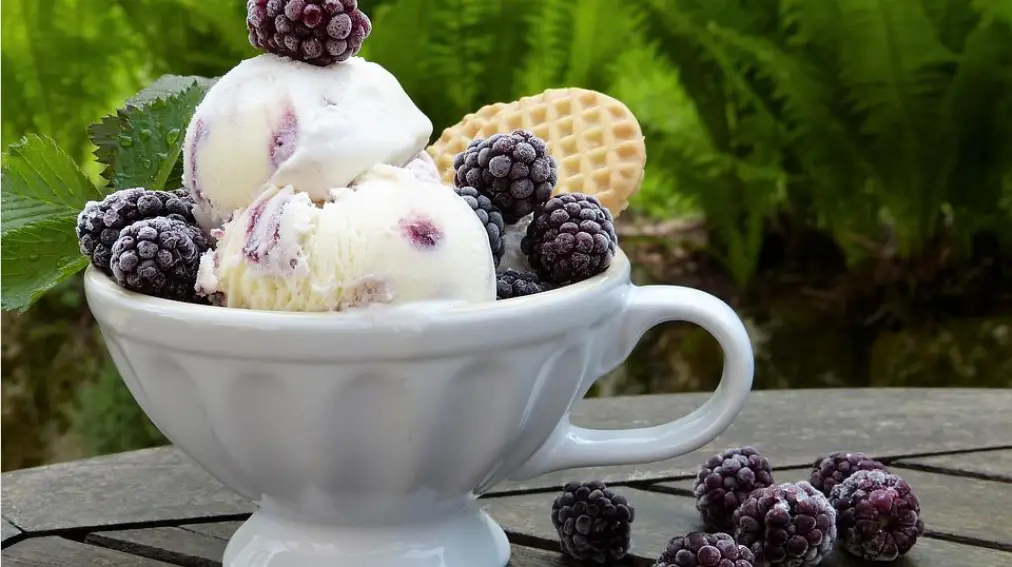Ingredients:
- 1 bunch celery
- 2 cups water
- 3 smalls piece ginger (½ inch piece )
- 2 tablespoons key limes or approximately 2 lime juice
- 6 tablespoons honey or 4 teaspoon sugar
Course: beverage,drink
0 · · Leave a Comment
Ingredients:
Course: beverage,drink
0 · · Leave a Comment
Ingredients:
Course: beverage,drink
1 · · Leave a Comment
Ingredients:
Course: beverage,drink
0 · · Leave a Comment
Ingredients:
Course: beverage,drink
6 · · Leave a Comment
If you’re following a low FODMAP diet, then you may be wondering if stevia is a good sweetener to use. Stevia is considered safe for people with IBS, and it does not cause bloating or gas as other artificial sweeteners can. In this article, we will discuss whether stevia is low FODMAP and how to use it on a low FODMAP diet.
Stevia is a sweetener that comes from the Stevia rebaudiana plant, which is native to South America. The stevia plant has been used for centuries by the Guaraní people of Paraguay and Brazil, who would chew on the leaves to sweeten their teas. Today, stevia is widely used as a sugar substitute in many countries around the world. The stevia plant contains Rebaudioside A (RebA), which is around 200 times sweeter than sugar.

When RebA is extracted from the plant and refined, it can be used as a natural sweetener in food and beverages. Stevia is also a popular choice for those looking to reduce their sugar intake, as it has zero calories and does not affect blood sugar levels. Whether you’re looking for a healthier alternative to sugar or simply want to enjoy something sweet without guilt, stevia may be the perfect option for you.
Many people who follow a low FODMAP diet are always on the lookout for new and interesting foods that they can add to their repertoire. Stevia is a popular natural sweetener that has become increasingly popular in recent years, but is it low FODMAP?
The short answer is yes, stevia is low FODMAP. However, there are a few things to keep in mind. First, not all stevia products are created equal. Some products may contain other ingredients that are high in FODMAPs, so it’s important to check the label before purchasing. Secondly, stevia is very sweet, so you don’t need to use it very much of it to get the desired effect. A little goes a long way.
If you’re looking for a low FODMAP sweetener that you can use in your cooking and baking, then stevia is a great option. Just be sure to check the label and use it sparingly.
Stevia is a natural sweetener that is made from the leaves of the Stevia rebaudiana plant. The leaves are dried and ground into a powder, which can be used to sweeten food and beverages. Unlike sugar, stevia does not cause tooth decay or contribute to obesity. In fact, some research suggests that stevia may help to regulate blood sugar levels and reduce hunger cravings. While stevia is not as widely available as sugar, it is becoming more popular as a natural alternative to artificial sweeteners.
Stevia is 200 times sweeter than sugar, but it has no calories. Because of this, stevia is often used as a sugar substitute by people who are trying to lose weight or manage their blood sugar levels. When used in small amounts, stevia is safe for most people. However, some people may experience side effects such as bloating, gas, and nausea. If you’re considering using stevia as a sugar substitute, be sure to talk to your doctor first.
For people with irritable bowel syndrome (IBS), the choice of sweetener can be a tricky one. Many artificial sweeteners are known to cause bloating and gas, which can aggravate IBS symptoms. However, stevia is a natural sweetener that is considered safe for people with IBS.
Unlike other artificial sweeteners, stevia does not cause bloating or gas. In fact, some studies suggest that stevia may even help to relieve IBS symptoms. While more research is needed, stevia may be a good option for people with IBS who are looking for a safe and effective way to sweeten their food.
Stevia is a popular choice for those looking to reduce their sugar intake. The leaves of the plant are dried and ground into a powder, which can be used to sweeten food and beverages. Unlike sugar, stevia does not affect blood sugar levels, making it a good choice for diabetics. It also has zero calories and is safe for pregnant women and children.
While stevia is generally considered safe, some people may experience side effects such as bloating, gas, or nausea. Those with allergies to ragweed or chrysanthemums may also be allergic to stevia. Ultimately, stevia is a safe and effective way to sweeten food and beverages without the negative effects of sugar. For these reasons, it is a popular choice for those looking to reduce their sugar intake.

If you’re looking for a low FODMAP sweetener, stevia is a great option. Just be sure to check the label and use it sparingly! Here are some tips for using stevia on a low FODMAP diet:
-Purchase stevia that is in powder form, as this is more concentrated than the liquid form.
-Start with a small amount, as stevia is very sweet. A little goes a long way!
-Add stevia to food or beverages gradually, so that you can gauge how much your body can tolerate.
-Be aware that some people may experience side effects such as bloating, gas, or nausea when using stevia. If you experience any of these symptoms, discontinue use and speak with your doctor.
If you’re looking for recipes that use stevia as a sweetener, here are a few to get you started:
Read More:
0 · · Leave a Comment
Is coffee low FODMAP? The answer is yes – most types of coffee are low in FODMAPs. However, it is important to watch out for added ingredients like milk and sugar, which can increase the amount of FODMAPs in your coffee. In this blog post, we will discuss the benefits of drinking coffee on a low FODMAP diet, as well as how to make sure you are getting the most out of your cup of coffee.
Coffee is made from the beans of the coffee plant. The coffee plant is a shrub that is native to Africa and Asia. The beans are roasted and then ground to make coffee. Coffee is a brewed drink that is low in FODMAPs.
This beverage is rich in antioxidants and has been linked with several health benefits, including a reduced risk of cancer and heart disease. Coffee is also a good source of caffeine, which can help to improve mental alertness and performance. However, it is important to note that caffeine can also cause side effects such as anxiety and jitteriness.

While coffee is generally safe for most people, those with irritable bowel syndrome (IBS) may want to limit their intake or avoid it altogether. This is because coffee can trigger symptoms like bloating, gas, and diarrhoea in some people. If you have IBS, talk to your doctor about whether coffee is right for you. They may recommend trying a low-FODMAP diet first to see if your symptoms improve.
For people with IBS, picking the right food and drink can be a minefield. Many delicious foods are high in FODMAPs, which can trigger uncomfortable symptoms like bloating and diarrhoea. However, coffee is low in FODMAPs and is thus safe for most people with IBS. In fact, coffee may even help to relieve some symptoms by stimulating the muscles of the digestive system. In addition, coffee contains antioxidants that can help to reduce inflammation
While it is possible to overdo it with coffee (and anything else), as long as you stick to moderate amounts, there’s no need to worry about triggering your IBS.
Coffee is one of the most popular beverages in the world, and it’s also a rich source of antioxidants. Antioxidants are substances that help to protect cells from damage, and they’ve been linked with a variety of health benefits. For instance, antioxidants can help to reduce the risk of chronic diseases like heart disease and cancer.
They may also help to lower blood pressure and improve mental health. What’s more, coffee is a good source of caffeine, which can help to improve focus and memory. So next time you reach for a cup of coffee, know that you’re not just getting a delicious pick-me-up – you’re also getting some important health benefits.
For many people, coffee is the first thing they consume in the morning. The strong aroma and rich flavour of a freshly brewed cup of coffee can help to wake you up and get you started on your day. But what is it about coffee that makes it so effective at perking you up?
Caffeine is a natural stimulant that can help to improve mental alertness and performance. In fact, caffeine is often used as a tool to help people stay awake and focused.
Studies have shown that coffee can help to improve reaction time, vigilance, and short-term memory. So whether you’re trying to get through a long workday or study for an exam, a cup of coffee may be just what you need.
In fact, caffeine is the most widely consumed psychoactive substance in the world. While coffee is the most common source of caffeine, it can also be found in tea, chocolate, and energy drinks. When consumed in moderation, caffeine can have positive effects on mental and physical performance.
However, too much caffeine can lead to side effects like jitters, anxiety, and insomnia. So if you’re looking for a morning pick-me-up, reach for a cup of coffee – just be sure to enjoy it in moderation.
There’s nothing like the smell of freshly brewed coffee in the morning. The rich, robust aroma can help to wake you up and get you started for the day. But coffee isn’t just a great way to start your day – studies have shown that the pleasing scent of coffee can also boost your mood and improve your overall sense of well-being.
So how does coffee make you feel so good? Research suggests that the scent of coffee activates the part of your brain responsible for happiness and pleasure. In one study, participants were asked to rate their mood before and after smelling coffee. The results showed that those who smelled coffee had a significantly improved mood, compared to those who didn’t.
Another study found that the scent of coffee may also help to reduce stress levels. So next time you’re feeling down, try taking a quick sniff of some fresh-brewed Java – it just might provide the pick-me-up you need.

If you want to make sure you are getting the most out of your cup of coffee, there are a few things you can do:
-Choose a quality coffee bean. A good quality coffee bean will produce a better-tasting cup of coffee.
-Grind the beans yourself. freshly ground beans will give you the best flavour.
-Use filtered water. This will help to remove any impurities that could affect the taste of your coffee.
-Don’t overdo it on the creamer and sugar. Too much of either can mask the flavour of the coffee itself.
-Experiment with different brewing methods. There is a wide variety of ways to make coffee, so find one that suits your tastes best.
If you’re a coffee lover on a low FODMAP diet, never fear – there are plenty of delicious recipes out there for you to enjoy. Here are five of our favourites:
So there you have it – five delicious coffee recipes that are low FODMAP and sure to please.
Read More:
0 · · Leave a Comment
Ingredients:
Course: beverage,drink
0 · · Leave a Comment
Ingredients:
Course: beverage,drink
0 · · Leave a Comment
Ingredients:
Course: beverage,drink
Cuisine: Mexican
0 · · Leave a Comment
Ingredients:
Course: beverage,drink
0 · · Leave a Comment
Ingredients:
Course: beverage,drink
0 · · Leave a Comment
Ingredients:
Course: beverage,drink
0 · · Leave a Comment
Ingredients:
Course: beverage,drink
0 · · Leave a Comment
Ingredients:
Course: beverage,drink
0 · · Leave a Comment
Ingredients:
Course: beverage,drink
0 · · Leave a Comment
Ingredients:
Course: beverage,drink
0 · · Leave a Comment
Ingredients:
Course: beverage,drink
0 · · Leave a Comment
Ingredients:
Course: beverage,drink
0 · · Leave a Comment
Ingredients:
Course: beverage,drink
0 · · Leave a Comment
Ingredients:
Course: beverage,drink
0 · · Leave a Comment
Ingredients:
Course: beverage,drink
Cuisine: Mexican
0 · · Leave a Comment
Ingredients:
Course: beverage,drink
0 · · Leave a Comment
Ingredients:
Course: beverage,drink
0 · · Leave a Comment
Ingredients:
Course: beverage,drink